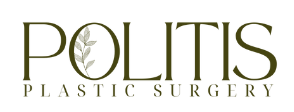 ERAS stands for Enhanced Recovery After Surgery.
ERAS stands for Enhanced Recovery After Surgery.
An ERAS protocol refers to a series of pathways designed to be followed to ensure improved patient experience before, during, and after surgery. They are a bundle of evidence-based interventions that ensure more rapid surgical recovery, shorter length of hospital stay, greater patient satisfaction, and reduced cost of both open and minimally invasive surgeries.
In the last 10 years, ERAS has become increasingly popular in different surgical specialties as a means of ensuring faster recovery and reducing complication rates following surgical procedures.
The key elements of ERAS are patient education, patient optimization before admission, minimal fasting before anesthesia, multi-modal analgesia with the right use of opioids when indicated, return home soon after the procedure, and return to normal diet and activities usually the day after surgery.
At Politis Plastic Surgery, we have made efforts to incorporate the tenets of ERAS in our reconstructive and aesthetic surgery operations during the last 5 years. And with increased implementation, we have been able to achieve faster recoveries, minimized post-surgical pain, and a speedier return to day-to-day life.
How does the ERAS protocol work?
With the ERAS protocol, the medical team works together with you before surgery to learn about your medical history and pain tolerance. This enables the medical team to create a surgical care plan that includes strategies to minimize pain after surgery, speed up recovery, and reduce narcotic usage.
By design, the ERAS interventions help to reduce negative experiences related to surgery. It includes a multi-modal approach to treatment of post-operative nausea and vomiting and to pain management.
For instance, as a patient, you may be given a scopolamine patch prior to surgery to prevent nausea and vomiting. Then once under anesthesia, you are given additional medications through IV for enhanced management of nausea, including steroids and anti-nausea medications.
Pain management is approached in a similar manner. For example, you may be started with Tylenol (an anti-inflammatory drug), together with a neuro-modulator, before the surgery. Then while already under anesthesia, a long-acting local anesthetic may be given to help numb the surgical area.
And so, by beginning anti-nausea and vomiting medication before surgery, these negative reactions are prevented.
Also, by administering pain medication before surgery, there is reduced body response to pain and less need for anesthesia and narcotics after surgery.
Therefore, when used, ERAS almost always results in less post-operative pain, nausea, and vomiting.
It results in faster recoveries, though recoveries still depend on the type of procedure a patient undergoes.
How is the ERAS protocol applied before surgery?
As part of ERAS protocol prior to surgery, the surgeon works with an anesthesiologist to determine and set the expectation of pain.
Since not all patients experience pain in the same manner, setting pain expectations through pre-operative assessment of the patient helps to tell how much pain the patient will experience and how to minimize it.
According to ERAS principles, the surgeon has to discuss with you how you generally tolerate pain, how you recovered from previous surgeries, and how you see yourself recovering from the impending operation. This helps the team to set your pain expectations. Then, after setting your pain expectations, the medical team will provide you with a blend of non-opioid medications that target how your nerves function.
A critical part of ERAS before surgery is educating you about what to expect and how to prepare. That’s because educating and preparing you for surgery reduces fear and apprehension.
It also helps to optimize your diet and exercise routine, to stop smoking for at least 1 month before surgery, reach a BMI of less than 30, and abstain from alcohol.All of these are steps that reduce the risk of complications after surgery.
How is the ERAS protocol applied during and after surgery?
As part of ERAS protocols, you are provided with medications to reduce nausea and vomiting during surgery.
A local anesthesia and a pain-relieving technique are applied to numb the area where the procedure is performed. The result is a blockage of nerves associated with the area from activating, which results in minimal discomfort during surgery.
After surgery, you will receive medications similar to the ones used before surgery to control pain. The drugs continue to keep the nerves associated with the surgical site from firing strongly.
Nevertheless, since pain tolerance differs from one person to another, there will be a need for continuous communication between you and your plastic surgeon regarding the pain.
Be sure to speak with your doctor when you have concerns and make sure to attend follow-up appointments.
ERAS protocols and the management of pain
One of the key pillars of ERAS is eliminating opioid medications in pain management—due to increased deaths caused by opioid overdosing. So plastic surgeons that follow the protocol avoid prescribing opioids to patients unless it is entirely necessary based on pre-operative assessment, pain expectation, and pain tolerance. Surgeons use alternatives to opioids, such as local anesthesia and non-narcotic medication.
In case you decide that it is necessary to take opioid medication for pain tolerance after plastic surgery, your plastic surgeon will inform you of the possible side effects and the appropriate dosage you should take. It is advisable that you speak with your doctor about anything you are not sure regarding prescribed pain medications.
Safe, quick-recovery plastic surgery
While pain is part of any plastic surgery procedure, the ERAS protocol helps to significantly reduce the amount of pain experienced.
At Politis Plastic Surgery, we follow the ERAS principles to develop effective pain management plans and minimize complications related to surgery. We have embedded the ERAS protocol as a standard model of care in our practice.
We continuously refine our interventions and measure our outcomes to ensure we achieve the highest standards of care. We are proud that the protocol has helped us achieve more rapid surgical recovery, shorter hospital stays, enhanced patient satisfaction, and reduced costs of care.
For more information on plastic and reconstructive surgery procedures, contact us.





